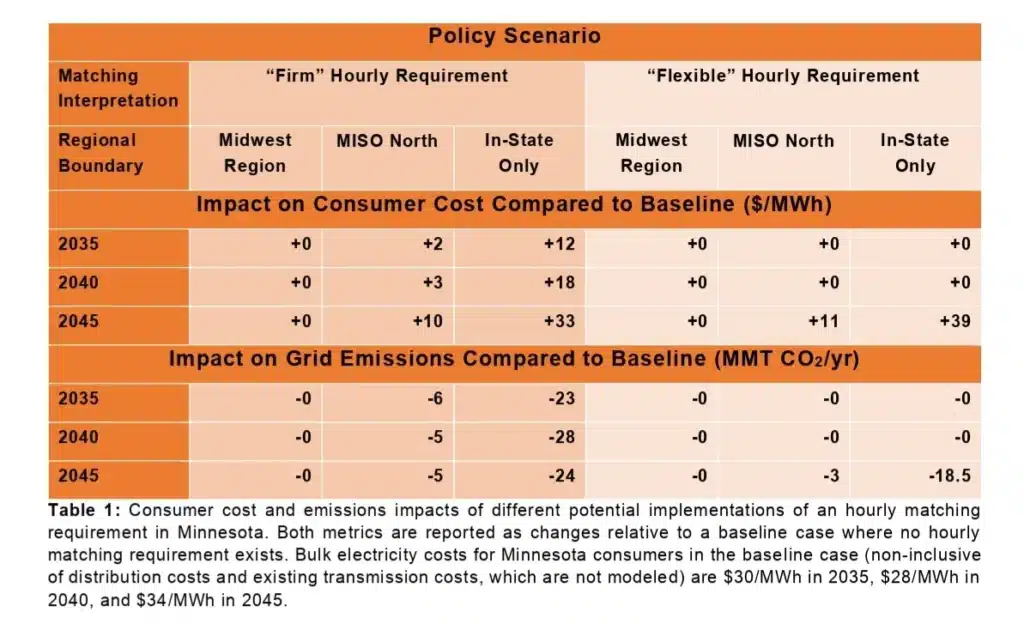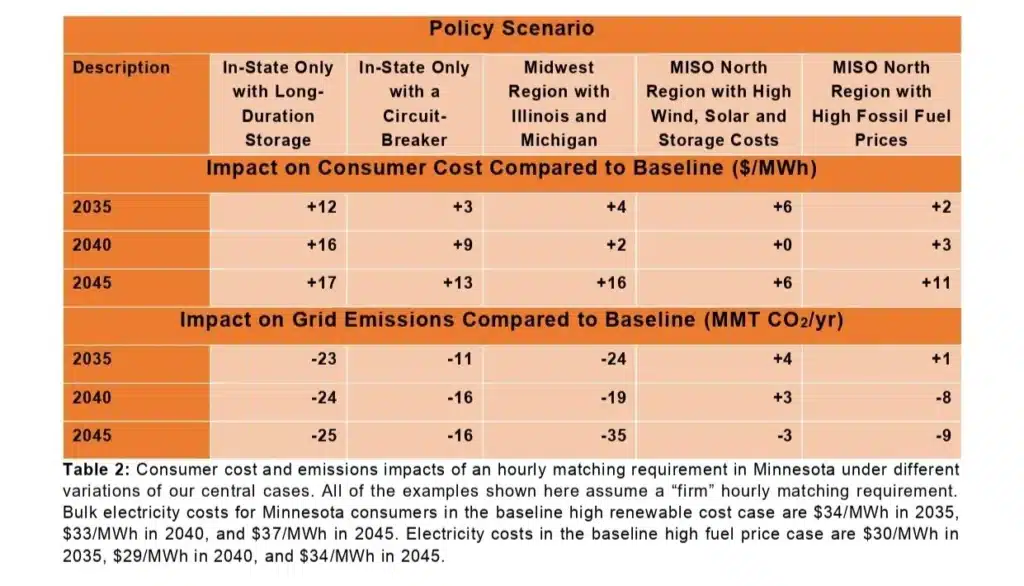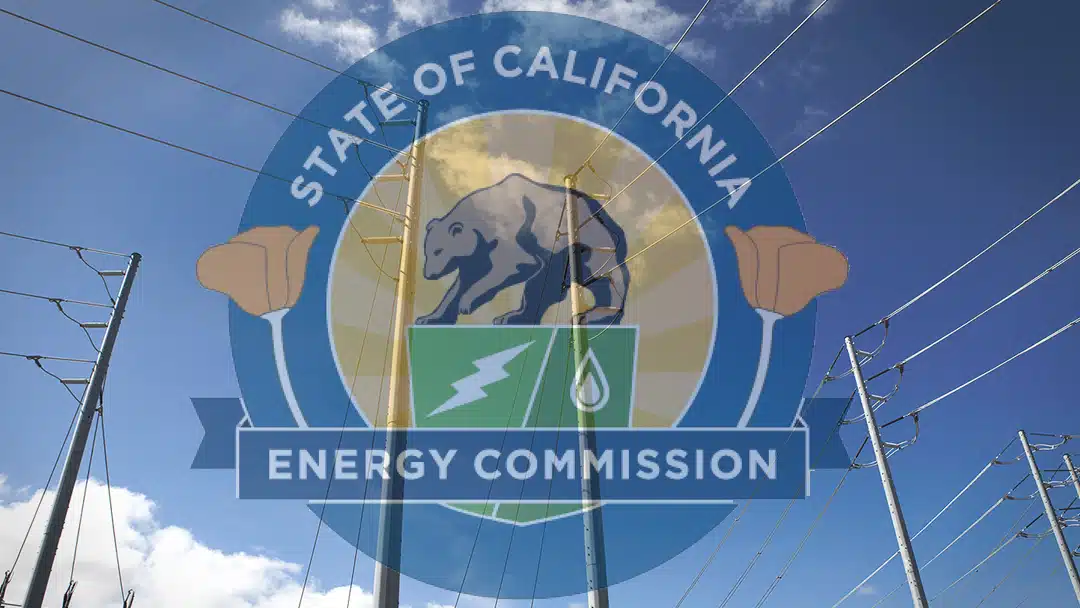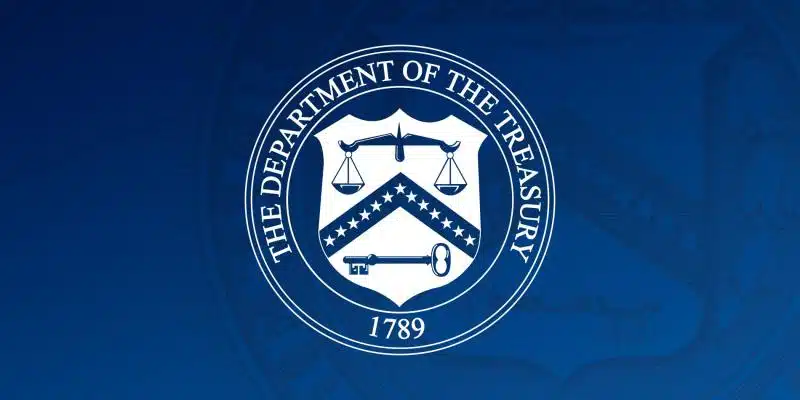A North Star State Climate Policy: Hourly Matching in Minnesota

- Minnesota is currently implementing its 100% carbon-free standard law, and the Minnesota Department of Commerce recommended hourly matching for compliance.
- This represents a watershed moment in state climate policy reform: the evolution of existing Renewable Portfolio Standards and Clean Energy Standards to more accurate and impactful policies.
- Hourly matched state climate policies are feasible, cost-competitive, and more impactful than today’s annually matched version — and they become even more impactful when multiple states adopt similar policies simultaneously.
- Minnesota is leading the way, and other states should consider how hourly matching can ensure more efficient grid decarbonization, decreased reliance on volatile gas prices, and greater climate leadership.
How recent recommendations for implementing their Carbon Free Standard law could pave the way for more ambitious state climate policy
In 2023, Minnesota adopted an ambitious climate law to achieve 100% carbon-free electricity by 2040. The law requires utilities to achieve 80% carbon-free electricity by 2030, 90% by 2035, and finally 100% by 2040. This year, the Minnesota Public Utilities Commission opened a public docket to solicit feedback on how to implement this law. EnergyTag submitted comments, alongside a number of other stakeholders, in support of high-integrity implementation rules. However, the truly exciting news from Minnesota is that their own Department of Commerce, demonstrating unprecedented leadership among climate-conscious state policymakers, has recommended that compliance with this law require utilities to match clean electricity production to consumption on an hourly basis.
The MN DOC’s leadership in their comment kicked off a whirlwind of response comments, research, and conversation. This blog will explore why an hourly and geographically matched carbon-free electricity standard matters, how it could be achieved, and where else this kind of reform should take place.
Today’s State Climate Policies
Renewable Portfolio Standards (RPS) and Clean Energy Standards (CES) are some of the more common policies states have implemented to drive clean energy deployment. These policies typically require a specific percentage of electricity sales from utilities in the state to be either renewable or zero-carbon. They range in ambition between standards and goals, can be quite modest, as with Ohio’s 8.5% renewable standard by 2026, or fairly ambitious, with Oregon’s 100% clean standard by 2040, and can differ on what resources qualify.

Source: NC Clean Technology Center.
However, the accounting rules in place for complying with these policies mean that even when states technically achieve a 100% standard, it will not necessarily result in clean electricity being delivered to customers at all times in all places.
Typically, an RPS or CES allows the retirement of energy attribute certificates (EACs) or renewable energy certificates (RECs) by utilities to comply with the percentage mandate in their state’s law: “In practice, an electric utility may happen to generate electricity to match its total retail electric sales, but may not generate sufficient carbon-free electricity to match its total retail electric sales. In any instance where an electric utility does not generate enough carbon-free electricity to match its total retail electric sales, an electric utility may need to purchase energy attribute certificates (EACs) to fill in the generation gap between carbon-free generation and load” (MN DOC Public Comment). However, where these certificates come from, when they are retired, and their matching to actual electricity usage is extremely flexible.
Under Minnesota’s previous climate law, RECs could be sourced from anywhere in the country and used at any time to cover their percentage requirement. This is possible because the rules allowed for “annual matching” under which utilities are allowed to match up their electricity use over the course of the year with clean electricity production (through some combination of their own generation and purchases of certificates) on a total volumetric basis – regardless of the mismatch between the underlying renewable generation and actual electricity usage. This means utilities could use solar power to claim 100% clean operations at night. The ability to claim fully clean operations by mismatching actual generation and usage means there is no incentive to invest in storage, clean firm technologies, or flexibility to help decarbonize hours in which renewables are not generating — all things we know we need for a fully decarbonized grid.
Moreover, the former Minnesota climate policy allowed RECs to be “banked” for up to four years before being required to be retired for compliance with the law. So not only could utilities in Minnesota use solar power to claim clean operations at night, they can use solar power from years ago to claim clean operations tonight.
In summary, the current status of state climate policies allows a utility to be “serving” Minnesota customers with 100% clean electricity by buying solar RECs in Texas and relying on significant gas and coal resources within the state. While these policies have helped spur the early clean energy industry and should be acknowledged for that, there is significant evidence to suggest these loose procurement and matching rules will not lead to true, long-term decarbonization.
What Needs to Change?
To start aligning claims of clean electricity usage with actual grid physics and operations and drive real decarbonization impacts, policies need to begin requiring that usage claims (or compliance with an RPS/CES percentage requirement) are only made when the clean electricity production is matched with usage on an hourly and locational basis, what we call “granular matching.” We are already seeing granular matching in policy with examples like the rules for the clean hydrogen production tax credit (45V) in the US and proposed legislation to match data center electricity usage with clean electricity on an hourly basis in Minnesota.
Granular matching policies also align with all of the leading, peer-reviewed research suggesting that hourly alignment of clean electricity production to usage is necessary to achieve true long-term decarbonization of the power sector, spur investment in new clean energy technologies in local economies, and avoid local pollution impacts while outsourcing the solution.
Minnesota Points the Way
In January, the Minnesota Department of Commerce (MN DOC) submitted a public comment recommending the Public Utilities Commission (the body that will be developing the rules) to require utilities to comply with Minnesota’s new law through hourly matching of clean electricity supply and demand on a timeline that increases in rigor and flexibility for smaller utilities during the first decade of compliance.

Source: MN DOC Initial Comment.
The DOC also proposed consideration of a tighter regional boundary from which EACs can be procured. This aligns with the 45V Clean Hydrogen rules, which set more geographically appropriate boundaries, rather than allowing certificates to be purchased from anywhere in the country.
Impacts of Granular Matching in the Minnesota CFS
In response to the MN DOC comment, Princeton University’s ZERO Lab conducted an analysis on the costs, decarbonization impact, and technology deployment if their granular matching requirement were implemented.
Here are some key takeaways from that study:
1. Very high rates of hourly matching can be achieved at reasonable costs.
The MN DOC initial comment recommends a 90% hourly matching requirement for utilities by 2040. Princeton’s analysis finds that this level of hourly matching can be achieved with either no or very low cost impacts on consumers. Tightening the definition of hourly matching (90% of total hours must be matched vs 90% of every hour must be matched) and tightening of geographic matching boundaries (down to in-state only) can change the cost impacts. As utilities approach 100% hourly matching in 2045, some of the more restrictive scenarios start to increase in cost, but the more flexible geographic matching boundaries create a scenario where there is no increase in cost compared to the baseline. This analysis calls into question some claims made by utilities in Minnesota that the rules, as proposed by MN DOC, will be prohibitively expensive.

Source: Princeton Zero Lab.
2. Tighter geographic matching boundaries lead to deeper decarbonization, but higher costs.
As expected, tighter geographic boundaries do increase costs as the market availability of certificates is contracted, however, it also drives deeper decarbonization. Tighter boundaries force more clean energy development that may not have occurred under the predicted baseline. This policy decision will also have impacts on local air quality, economic development in the state, and improved long-term reliability and resilience by aligning clean energy buildout on the local grid with real electricity load in Minnesota.
3. New technologies can be commercialized, bringing economic development and innovation to Minnesota.
When a tighter geographic boundary for sourcing clean electricity is implemented, it can incentivize advanced decarbonization technologies such as long-duration energy storage (LDES). Enabling the deployment of this new technology will have local economic impacts as projects are deployed in Minnesota and can support deep, local decarbonization while keeping costs low: “Long-duration storage can be critical for cost-effectively eliminating fossil generation, and here cuts the cost premium of 100% in-state hourly matching in half from $33/MWh to $17/MWh.”

Source: Princeton Zero Lab.
4. Matching state policies in the region would drive greater decarbonization impacts and avoid “leakage.”
A final key takeaway from the Princeton modeling is that when surrounding states implement similarly impactful climate policies, the emissions reduction potential is especially strong. In a scenario where only Minnesota implements an hourly matching requirement, with loose geographical sourcing requirements, utilities in Minnesota could source clean electricity certificates from a number of other states that lack similarly rigorous climate policies and have less incentive to keep those certificates themselves. Alternatively, if surrounding states implement hourly matching requirements for their own climate policies, the marketplace for valuable clean electricity becomes more competitive, driving more clean energy projects to come online, and leading to more impactful decarbonization in each state. See below, where the “Midwest Region with Illinois and Michigan” column shows the projected impact when those two states match Minnesota’s policy: We see slightly higher costs compared to other policy scenarios and also the deepest emissions cuts.

Source: Princeton Zero Lab.
While this coordinated, high-integrity policy approach understandably makes the greatest emissions impact, it is important to clarify that state policy reform towards hourly matching does not need to be all or nothing. Simply, 100% hourly matching does not need to be required. High rates of hourly matching, such as 85-95%, make significant impacts on emissions and efficient clean energy deployment, while avoiding the highest costs of decarbonizing the final few hours of a year. There could also be a cost cap included in the policy to contain costs as compliance approaches 100%. Requiring high levels of hourly matching, even if not fully 100%, would be an immense step forward from today’s annually accounted policies without letting perfect get in the way of great.
Hourly Matching and Reliability
Providing a reliable electricity supply during a time of data center demand growth, broad electrification, and more extreme temperature swings is as important as ever. A policy that requires utilities to meet increasingly higher rates of their demand with clean electricity on an hourly basis, like the one proposed by MN DOC, helps to firm up a reliable, carbon-free supply for consumers. As the grid continues to transition and bring on more renewable energy, an hourly matching requirement encourages the continuous firming of this more intermittent supply. That means more storage, clean firm technologies, and efficient planning processes for where and at what ratio new clean energy assets should come onto the grid. The long-term vision of a fully decarbonized electric grid will not happen cost-effectively or in a timely manner without a long-term policy that ensures consistent alignment between supply and demand on an hourly basis, effectively meeting the realities of how the grid operates in practice.
How Does This Affect Costs?
A number of utilities filed comments claiming the MN DOC’s recommendation would be too costly to achieve. In particular, Xcel Energy produced an analysis that stated: “In order to meet the 2040 goal…we would need to add an incremental 17,700 MWs of battery storage and over 4,000 MW of incremental solar resources, both of which would require significant acreage, above the amount included in our recently approved IRP. As a result, in 2040, the revenue requirement associated with this overbuild of resources would be over 60 percent higher than the costs included in our IRP.”
However, on May 23, the MN DOC filed a reply comment to this Xcel analysis, which reveals critical and suspect assumptions made by Xcel potentially skewed the evidence towards seemingly more costly compliance than would occur given the MN DOC’s original proposal.
Critically, Xcel’s analysis models 100% hourly matching within only their territory, allowing for no imports or exports. As expected, this raises costs massively within the model because it would force Xcel to meet this standard by exclusively building clean energy generation and storage to meet the 100% hourly matching requirement, as opposed to purchasing electricity from elsewhere and exporting electricity to reduce costs. This limitation was not proposed by the MN DOC’s initial comment, and those assumptions included in Xcel’s modeling result in misleading cost conclusions.
The reply comment from MN DOC includes alternative modeling runs showing how allowing market exports and imports to and from MISO can reduce the need to build out 10s of GW of new power, the majority of which is storage used to meet matching requirements for a very small number of hours. Market imports and exports offer both more efficient and realistic planning and strategic buildout – a win-win for meeting Minnesota’s clean energy goals.
Additionally, a circuit breaker policy proposal, which allows for compliance payments when the cost of an additional MWh of clean power would rise above a given threshold, further drives down the overall cost of complying with a potential hourly matching standard.
The MN DOC’s April comments clarify their recommendation that hourly matching requirements for compliance should be explored in a stakeholder working group because, at the time, they had not been able to publicly analyze the Xcel modeling published in the docket as described above. Now that the MN DOC has submitted their May supplemental comments addressing the Xcel modeling, we will continue to monitor the docket and ongoing implementation process to see whether the MN PUC will consider an hourly matching standard as initially proposed by the MN DOC.
States Should Follow Minnesota’s Lead
Regardless of how the MN DOC recommendations do or do not change, their comment maintains a fairly rigorous geographic matching requirement for certificates and urges the Public Utilities Commission to set up an hourly matching task force to better understand how hourly matching could be implemented in the future. They also recommend that the PUC require all utilities to include hourly matching modeling runs in their Integrated Resource Plans (IRPs), where utilities engage in long-term planning, which will support reliability and more efficient decarbonization planning.


Source: MN DOC May Supplemental Comment.
Now is the time for states with ambitious climate policies to update their programs to something more accurate, impactful, and reliable. Minnesota has outlined a path forward, and now more than ever, we need states to step up and lead the clean energy transition. One state taking bold strides can make a difference; many states working in parallel can make real change.




